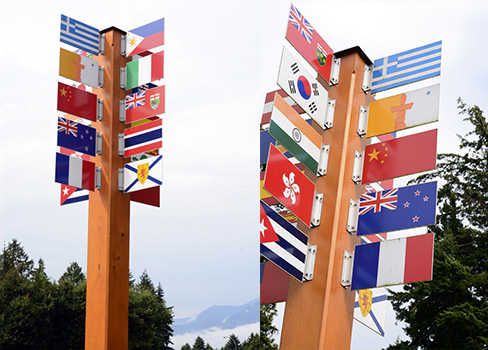First published on December 19, 2014 by Brad Laviolette
Years ago, I made a rash and unplanned decision to hitchhike from BC to Ontario. With little to no thought given to my journey, my experience was erratic, slow and frustrating at times— yet completely inspirational and memorable, thanks to the natural beauty of Canada.
The country we call Canada, as a brand, has a holistic appeal and one that is grounded in its authenticity. Most brands however, cannot rely solely on their products and services and must focus on providing value beyond their product offering in a way that is authentic and transparent, and makes the consumer feel like they are a part of an experience.

Digital Branding is about the journey that connects the sum of our experiences with a brand, company or product. Travelling is similar, but unlike the old saying, “It’s about the journey and not the destination” marketers know there is always an end in mind. In fact, our livelihood depends on achieving our business objectives!
The best digital branding practices connect the consumer’s experiences by understanding the customer’s journey, knowing which paths they’ll take, and what value you can deliver along the way. No path we travel is a linear one (though, I’d argue my recollection of the Canadian Prairies would say otherwise), especially when it comes to our consumer behaviour and path to purchase.
So how can we map it out and deliver the best experience for our customers? A well composed travel plan will get you where you need to go, and aligning a digital branding strategy with your customers’ path to purchase is no different.
Here are 5 ways you can improve and build upon your digital branding efforts:
1) Focus on value
-
-
- Align your business and user objectives to create value in your digital marketing activities. Digital branding can bridge the gap between your objectives and what your customer wants to engage with.
-
-
-
- Content should be the foundation of delivering that value, whether it is educating, building trust, or engagement.
-
2) Understand the user journey
-
-
- Take a close look at the journey all the way to purchase for your brand or business. What channels are working together in the process?
-
-
-
- Work on your content theming and building interactivity for each of the channels identified.
-
3) Build your own digital branding toolkit
-
-
- Curate a selection of digital tools and channels to help you deliver your digital branding and value proposition. If your customers use social media, are you listening to what they are saying? By using social listening tools you can create the type of content your customers want to consume and on the platforms they use. Then you can deliver the valuable content at the right time through the right channel.
-
-
-
- Define each channel’s role and its impact on the user journey, then build out a content strategy to assist the customer along the way to purchase.
-
4) Measure
-
-
- Understand the value of each marketing channel and measure its effectiveness in meeting your end goal.
-
-
-
- Lose the “Last Click” mentality and gain insight in all the assisted interactions along the way.
-
5) Test and learn
-
-
- Use the data you collect to inform your future digital marketing efforts.
- Find insight into every channel’s contribution to continually refine your digital strategy and create actionable items to implement that will help reach your end objectives.
-
Key Takeways
Digital branding is about providing the optimal journey for our customers through the experiences we create and the value we deliver as marketers. If there’s one thing my hitchhiking expedition taught me, it’s to plan and map the journey before I begin! Because once we know the lay of the land, we can be better prepared to provide a better experience along the way.



![Connect with South Asian Canadians With These English [And Hindi!] Diwali Wishes](https://www.latmultilingual.com/wp-content/uploads/2023/11/Diwali-500x383.png)









